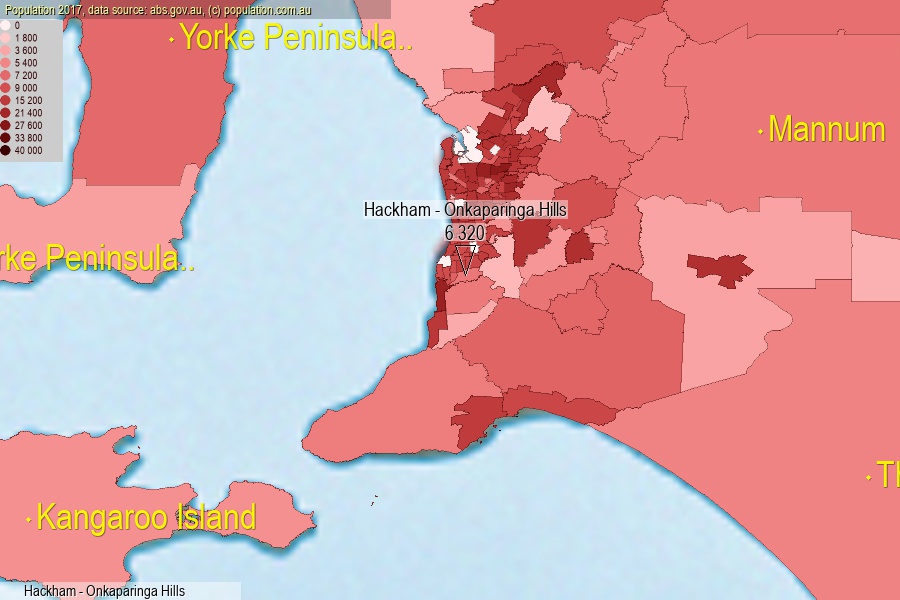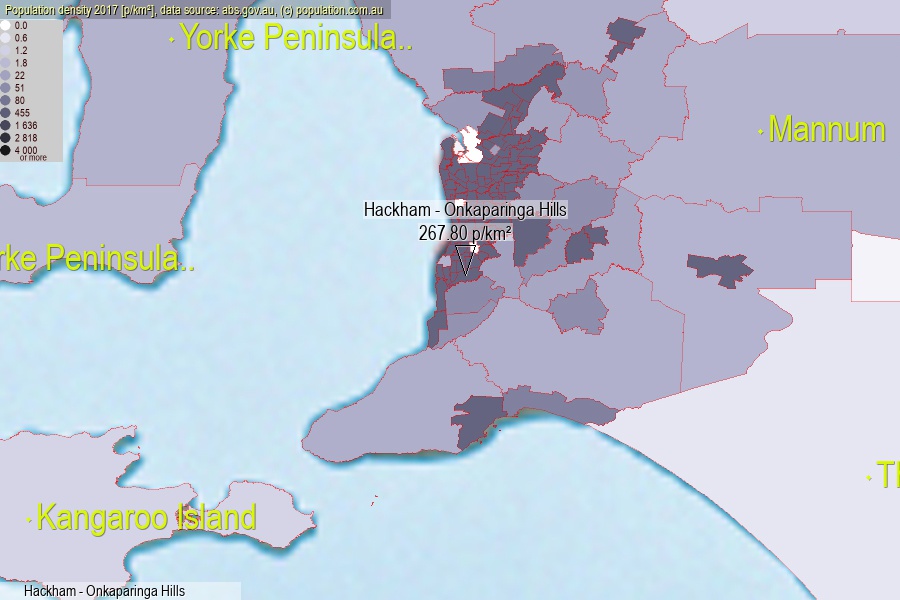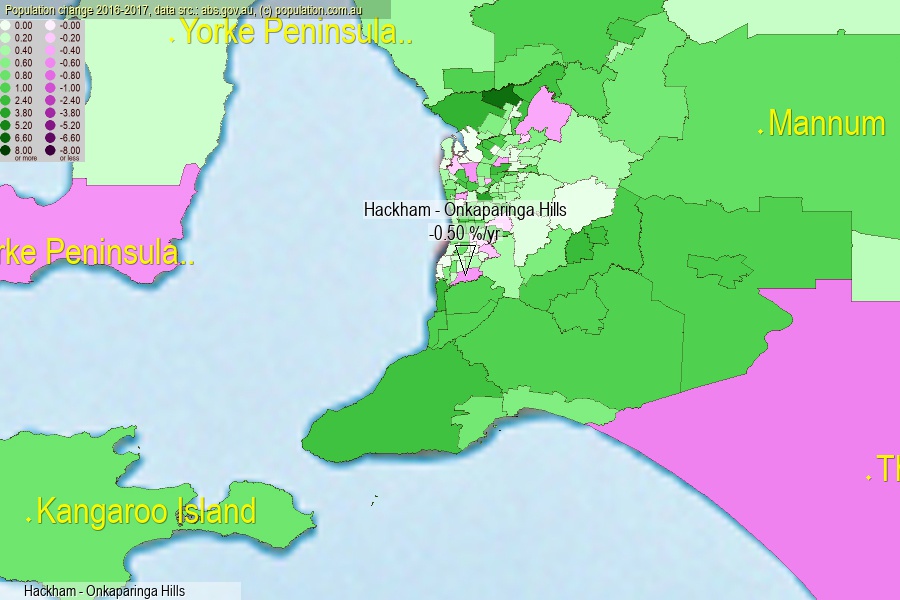 population.com.au
population.com.auLast official estimated population of Hackham - Onkaparinga Hills (as Statistical Area Level 2) was 6 320 people (on 2017-06-30)[2]. This was 0.03% of total Australian population and 0.365% of SA population. Area of Hackham - Onkaparinga Hills is 23.60 km², in this year population density was 267.80 p/km² . If population growth rate would be same as in period 2016-2017 (-0.5%/yr), Hackham - Onkaparinga Hills population in 2025 would be 6 070. [0]



Click to enlarge. Hackham - Onkaparinga Hills is located in the center of the images.
Population [people], population density [p./km²] and population change [%/year] [2]
View borders » (new window) [4]
[1991-1992] +4.84 %/Yr.
[1992-1993] +6.84 %/Yr.
[1993-1994] +5.61 %/Yr.
[1994-1995] +1.71 %/Yr.
[1995-1996] -0.35 %/Yr.
[1996-1997] +0.08 %/Yr.
[1997-1998] -0.26 %/Yr.
[1998-1999] +0.35 %/Yr.
[1999-2000] +0.11 %/Yr.
[2000-2001] -0.40 %/Yr.
[2001-2002] -0.16 %/Yr.
[2002-2003] +0.26 %/Yr.
[2003-2004] +0.53 %/Yr.
[2004-2005] +0.53 %/Yr.
[2005-2006] +2.40 %/Yr.
[2006-2007] +1.13 %/Yr.
[2007-2008] +0.97 %/Yr.
[2008-2009] +0.58 %/Yr.
[2009-2010] +0.24 %/Yr.
[2010-2011] -0.63 %/Yr.
[2011-2012] -0.03 %/Yr.
[2012-2013] -0.41 %/Yr.
[2013-2014] -0.64 %/Yr.
[2014-2015] -1.00 %/Yr.
[2015-2016] -1.43 %/Yr.
[2016-2017] -0.50 %/Yr.
[0] Calculated with linear interpolation from officially estimated population
[1] Read more about SA2 and Australian Statistical Geography Standard (ASGS) on abs.gov.au
[2] Population data from Australian Bureau of Statistics (Population and density: 2017; change: 2016-2017)
[3] Digital Boundaries: Australian Statistical Geography Standard (ASGS) 2016.
[4] Border coordinates are simplifyed using Ramer-Douglas-Peucker algorithm.